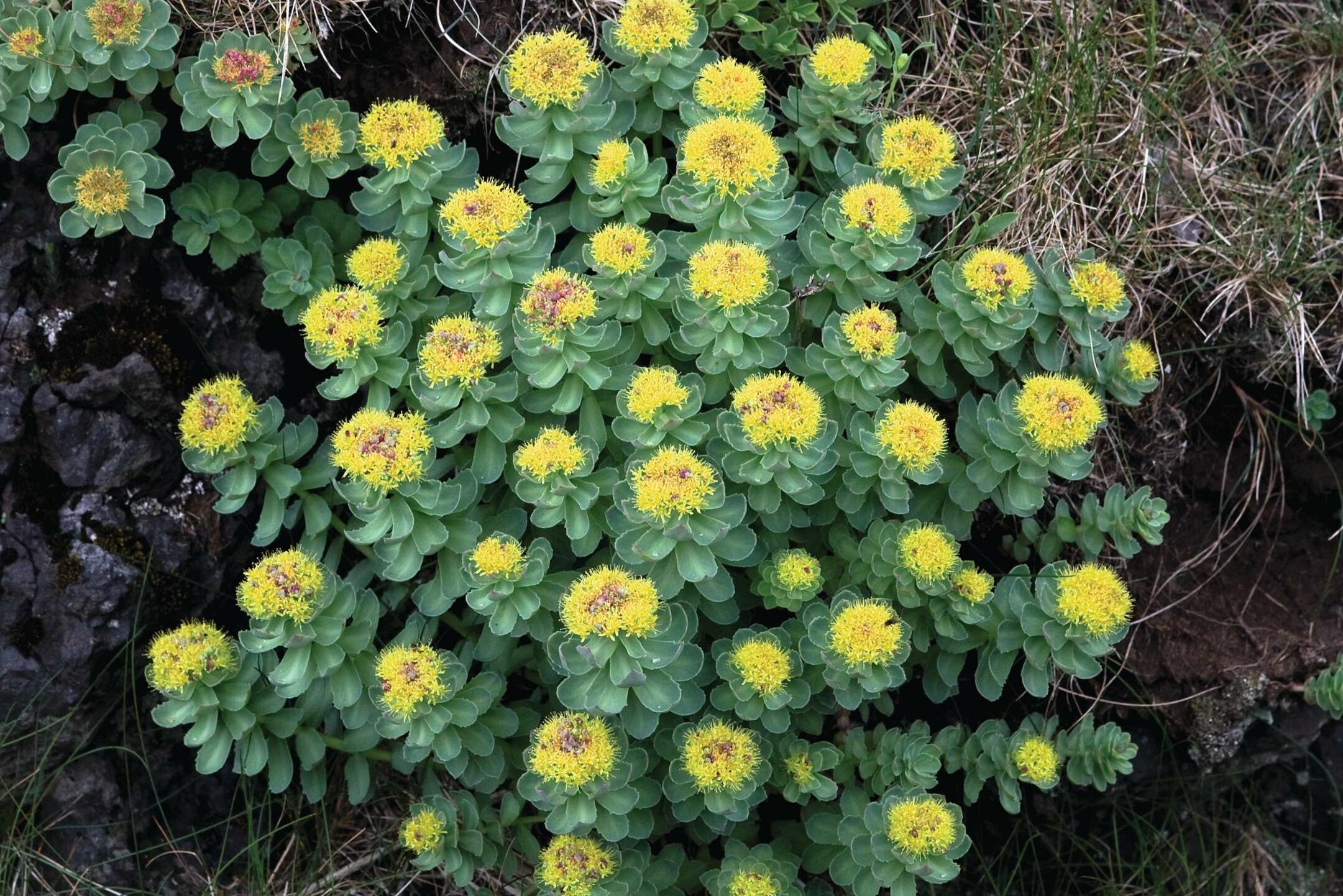Battling dry conditions, resilient roseroot flowers on the steepest slopes

ALPINE PLANTS ARE ADAPTED TO THE extreme conditions in mountains, where the soil is thin. In Britain, they include roseroot, which produces clusters of fuzzy yellow flowers in June. Its fleshy, water-storing leaves and stems might remind you of the succulents found in deserts, but in fact, are equally suited to uplands. Drought is one of the main dangers roseroot faces – poor mountain soil only allows for shallow roots, leaving it vulnerable to drying out.
In his book Wild Fell, conservationist Lee Schofield describes how roseroot and other alpine flowers have become trapped in “vertical prisons”. Overgrazing has confined them to isolated, marginal sites, often the steepest slopes and cliff ledges that sheep cannot reach. But fencing out sheep from certain areas can bring our uplands back to life. As Schofield says: “A landscape of flowers is a landscape of hope.”